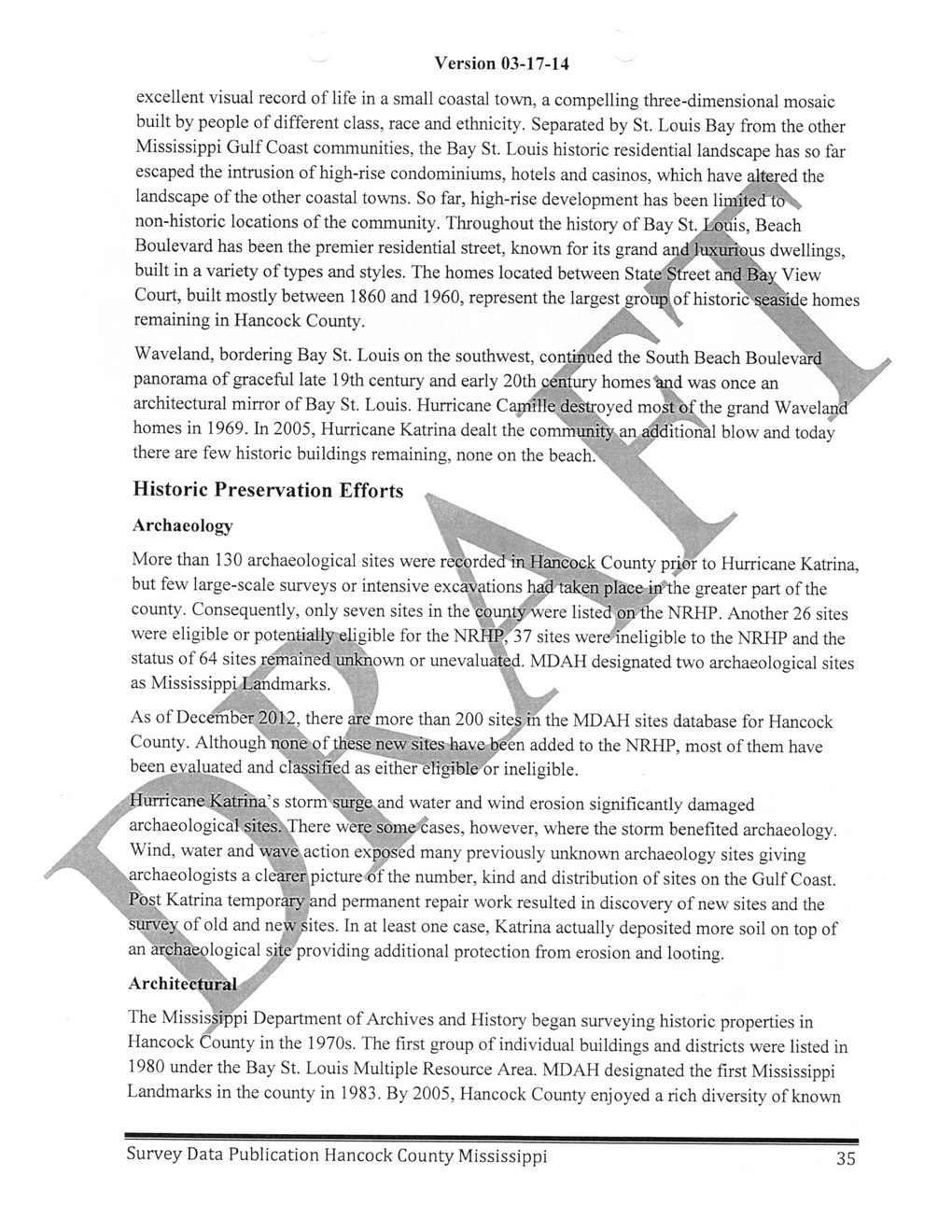This text was obtained via automated optical character recognition.
It has not been edited and may therefore contain several errors.
Version 03-17-14 excellent visual record of life in a small coastal town, a compelling three-dimensional mosaic built by people of different class, race and ethnicity. Separated by St. Louis Bay from the other Mississippi Gulf Coast communities, the Bay St. Louis historic residential landscape has so far escaped the intrusion of high-rise condominiums, hotels and casinos, which have altered the landscape of the other coastal towns. So far, high-rise development has been limited'to non-historic locations of the community. Throughout the history of Bay St^Kbuis, Beach Boulevard has been the premier residential street, known for its grand and luxurious dwellings, built in a variety of types and styles. The homes located between State Street and Bay View Court, built mostly between 1860 and 1960, represent the largest grouj^of historic seaside homes remaining in Hancock County. ^ \ //"^ \ \ Waveland, bordering Bay St. Louis on the southwest, continued the South Beach Boulevard \ panorama of graceful late 19th century and early 20th/cenfury homes'and was once an architectural mirror of Bay St. Louis. Hurricane Camlllei destroyed most of the grand Waveland homes in 1969. In 2005, Hurricane Katrina dealt the communityxan additional blow and today there are few historic buildings remaining, none on the beacfi'.\ Historic Preservation Efforts Archaeology More than 130 archaeological sites were recorded in .Hancock County prior to Hurricane Katrina, but few large-scale surveys or intensive excavations had taken place in'the greater part of the county. Consequently, only seven sites in the county were listed on the NRHP. Another 26 sites ‘ ' - / y were eligible or potentially eligible for the NRHP^, 37 sites were ineligible to the NRHP and the status of 64 sites remained unknown or unevaluated. MDAH designated two archaeological sites as Mississippi Landmarks. \ 'J- '' ' •/" As of December 2012, there are more than 200 sites in the MDAH sites database for Hancock County. Although none of these new sites have-been added to the NRHP, most of them have been evaluated and classified as either'eligiblfPor ineligible. HurricaneKatrina’s storm surgevand water and wind erosion significantly damaged archaeological sitesXThere were some cases, however, where the storm benefited archaeology. Wind, water and wave action exposed many previously unknown archaeology sites giving archaeologists a clearer.picture of the number, kind and distribution of sites on the Gulf Coast. Pos,t Katrina temporary and permanent repair work resulted in discovery of new sites and the survey, of old and new sites. In at least one case, Katrina actually deposited more soil on top of an archaeological site providing additional protection from erosion and looting. \ \ '' Architectural x The Mississippi Department of Archives and History began surveying historic properties in Hancock County in the 1970s. The first group of individual buildings and districts were listed in 1980 under the Bay St. Louis Multiple Resource Area. MDAH designated the first Mississippi Landmarks in the county in 1983. By 2005, Hancock County enjoyed a rich diversity of known Survey Data Publication Hancock County Mississippi 35

Hancock County History and Archeology Survey-Publication-Data-2014-(36)